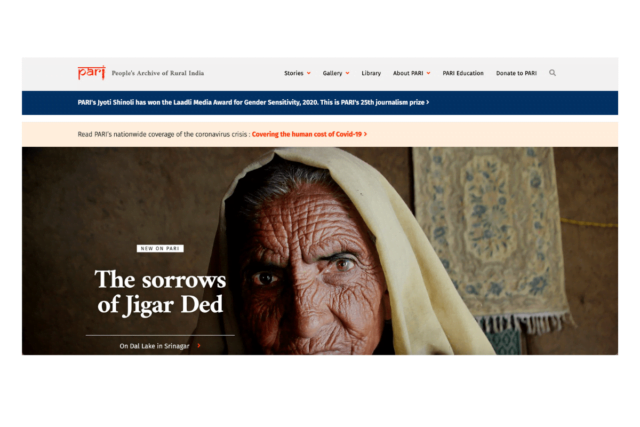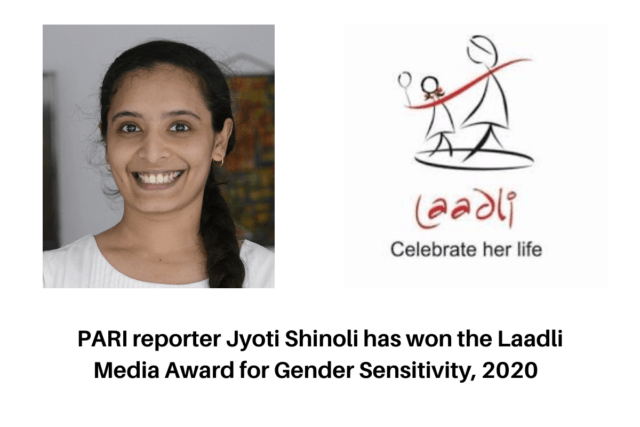Gone are the days when people would go to libraries and museums or read books for knowledge. These days as everything is available on the internet, it has become a one-source easy destination for all the information of the world.
The visionary man behind PARI, P. Sainath, realised the power of the internet and created a platform which provides both insights from rural India and doubles as a pool of database.
What Is PARI?
A living journal and an archive, the People’s Archive of Rural India (PARI) is the brainchild of P. Sainath. P. Sainath is a recipient of the Ramon Magsaysay Award and is known as India’s best rural reporter.
PARI aims at generating current and contemporary reports about the countryside. At the same time, it creates a database of its already published stories, reports, videos, and audios.
It is a non-commercial, non-profit enterprise that is not dependent on any government funds, advertising, or private media houses. All of PARI’s content is free for public access and falls under the category of Creative Commons.
Also Read: How And Why Is There A Sudden Hike In Child Marriages In Odisha?
Why Is PARI Important?
In the age of media sensationalization, PARI holds significance in more than one way, the first being the nature of the organization itself. Anyone willing to meet the prescribed standard of the content can contribute or volunteer for PARI from any location in the world.
Second is the goal that sets it apart from other journalistic endeavours. The aim is to provide a platform for stories that otherwise are left unheard, the stories from rural India, the neglected lived reality of two-third of Indians.
It aims to serve as a bridge to cover the gap between the two diverse worlds of urban India and rural India.
Third and quite important, PARI serves as an important academic source for scholars. Being committed to both reportage and research of rural India, the extensive and authentic research provides scholars with an unprecedented window into the complexity of rural India.
This will fetch more inclusive policy-making in the long run since urban scholars will be able to know more about rural India.
Prestigious Accolades For Honest Journalism
For the phenomenal work done by its journalists, PARI has won twenty-five prestigious journalism awards since its inception in 2014.
Recently, PARI reporter Jyoti Shinoli, 28, won the Laadli Media and Advertising Award for Gender Sensitivity, 2020. It is the third journalism award that Jyoti Shinoli has brought to PARI and her second in 2020. 
The Pari team also won the Prem Bhatia Award for Journalism on Environment and Development Issues in 2020. You can view the full list of their achievements on their website.
The Impact Of PARI
People’s Archive of Rural India gives us a sense of hope amidst the looming threat of depreciating journalism. While the big media houses are muddling down to utter ridiculousness in the name of news reporting, it is initiatives like PARI which present to us the world around, in its most authentic form.
For the longest time, urban India was disconnected from its roots, that is rural India. India is a diverse country and for India to embrace its diversity, it is important that all citizens are made aware of each other’s reality. PARI aims exactly at that.
What do you think about PARI? Do you think initiatives like PARI can bring change in the long run? Let us know your opinions in the comments.
Image Credits: Google Images
Sources: Al Jazeera America, NewsClick, Feminism In India
Find the blogger: @darshanaaac
This post is tagged under: PARI, People’s Archive of Rural India, P. Sainath, Laadli Media Award, Prem Bhatia Award, Journalism, Real Journalism, Rural India, Rural Indian Women Problems, Urban India, Urban Indian Women, Free Public Access, Jyoti Shinoli, Research, Reporting, Database, Scholars, Indian Scholars, Urban Scholars, Network
Other Recommendations:
A Thing Or Two Present Day Indian Reporters Could Learn From Doordarshan Legends





























